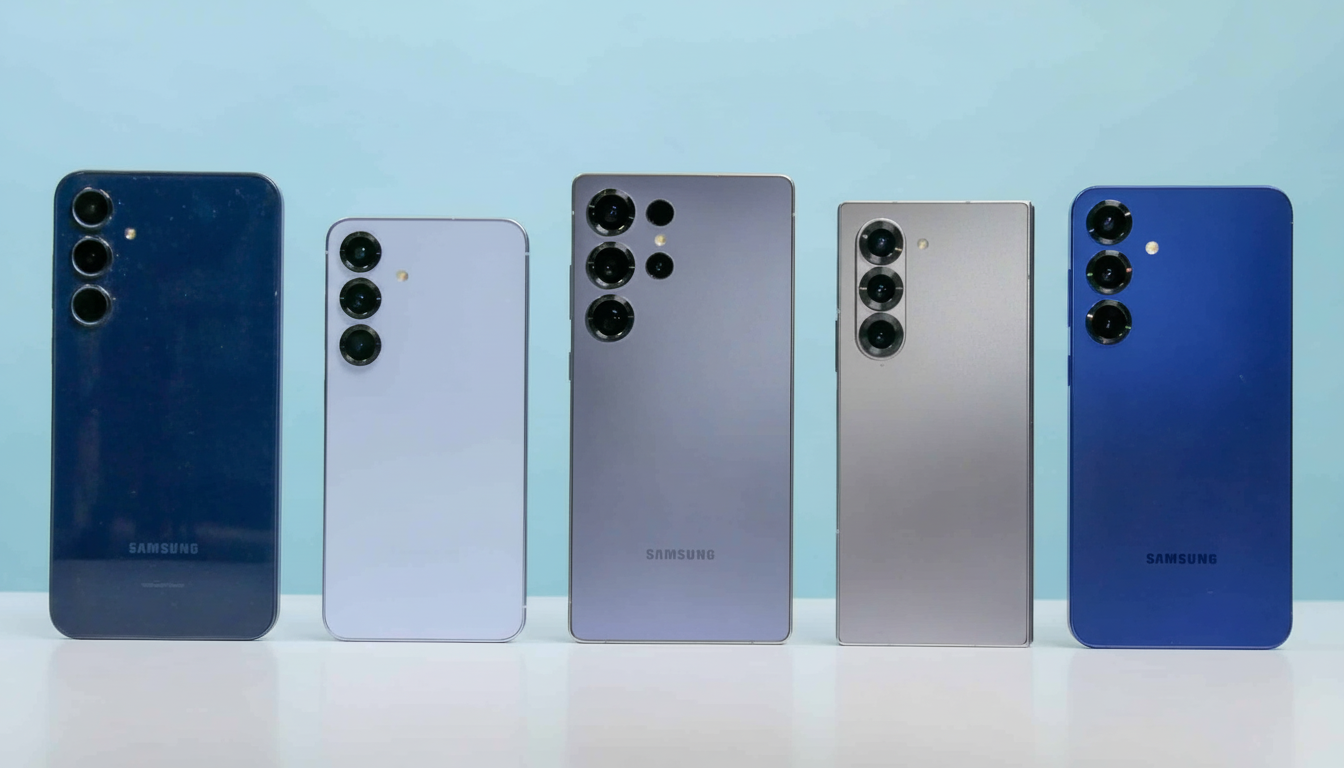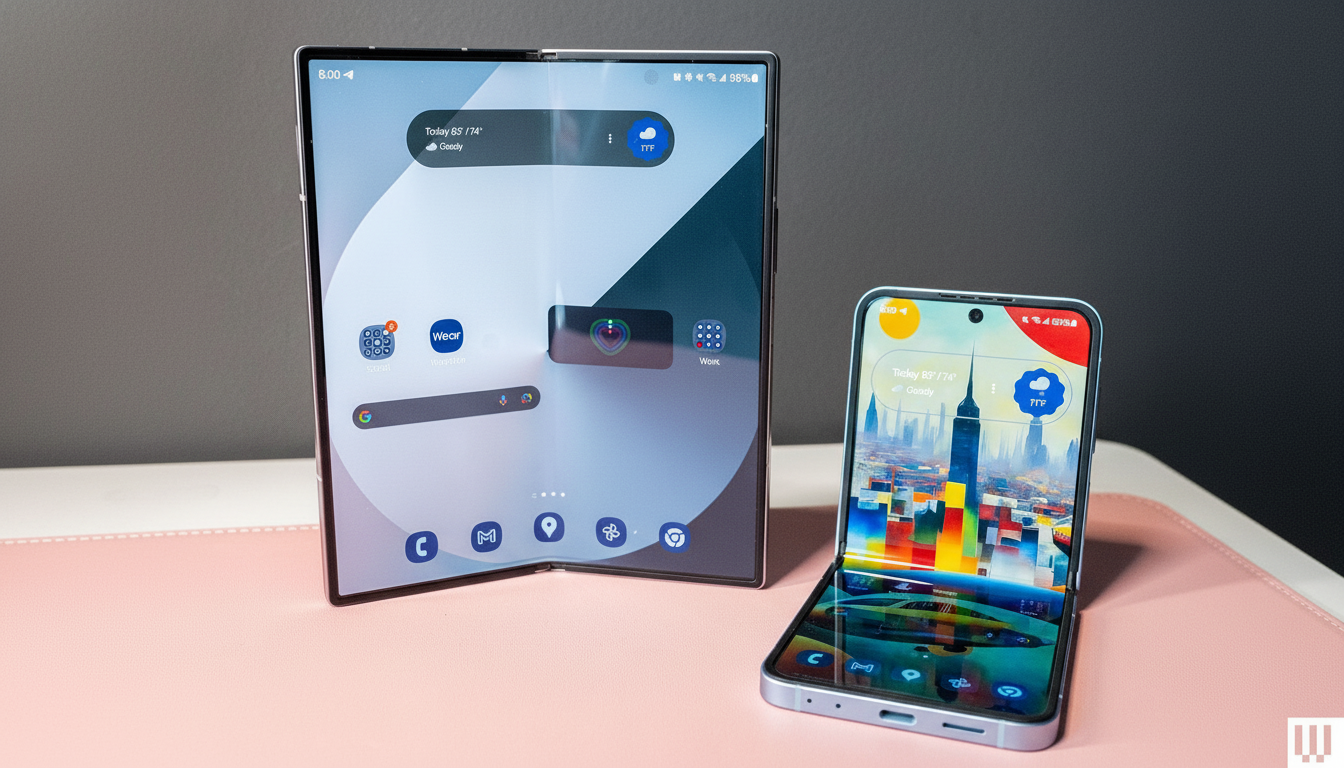Samsung is expanding its foray into XR beyond the previously announced Galaxy XR headset, announcing a firm focus on an extended family of Android-powered XR smart glasses. In an update on its company blog, the company confirmed it’s working on multiple form factors, including AI glasses, and naming collaborators pointing toward a serious push into general-purpose wearable AR: Google for platform integration, Warby Parker for prescription-ready design, and fashion brand Gentle Monster for style-forward frames.
Samsung Confirms That It’s Working On Several Smart Glasses Tracks
The headline detail is breadth. It’s not building to one “halo” pair but rather setting itself up for multiple product tiers. The Google tie-up connects glasses to Android XR, the platform that also drives Samsung’s Galaxy XR headset — offering the same stack for sensors, vision, and on-device AI. Warby Parker’s participation signifies prescription compatibility, face-fit direction, and retail reach. Gentle Monster offers a second line that prioritizes high-fashion design, an echo of the brand’s previous tech-forward eyewear collaborations.
- Samsung Confirms That It’s Working On Several Smart Glasses Tracks
- Fashion And Fit Are Strategic, Not Cosmetic
- What Android XR on Glasses May Allow Users to Do
- Hardware Puzzle: Battery, Cameras, and Displays
- Competitive Landscape and the Market Outlook Ahead
- What to Watch Next as Samsung Develops Smart Glasses

Industry rumors have long hinted that Samsung was working on both display-equipped AR glasses and lighter “AI glasses” with microdisplays for voice, camera, and assistant features, but lacking integrated displays for users to see through. The new language from Samsung reinforces that split, which reflects the market trend already in motion where camera-first, assistant-driven frames are finding early adoption.
Fashion And Fit Are Strategic, Not Cosmetic
Glasses rise or fall on comfort and optics, not specs alone. Warby Parker provides sizing information, virtual try-on skills, and even a prescription manifest that could reduce friction at purchase. The company already employs sophisticated face mapping with its app to take pupillary distance — essential for aligning any display or camera — as well as simplified choices for single-vision and progressive lenses. That infrastructure could be critical for smart glasses that require accurate optical alignment without relying on clunky housing.
The fact that Gentle Monster is behind these creations is significant for a reason that consumer AR often lacks: desirability. For casual wear, weight should be on the lighter side, around ~50–60 grams. The lower mass, combined with the familiar aesthetic, makes for a less “techy” footprint and gets it closer to acceptance by non-enthusiasts, Samsung’s real objective here.
What Android XR on Glasses May Allow Users to Do
Android XR provides Samsung a native path to multimodal AI and phone-level services on glasses. Look for hands-free photo taking, audio-first assistance (as opposed to using a screen), fast replies, and glanceable indicators on some models with LEDs or less-than-obtrusive heads-up elements. Given that Google is integrated, on-device transcription, live language translation, and visual search make sense here, especially alongside a camera and spatial audio.
The larger play is continuity between devices. If Samsung follows its blueprint for how these glasses work with phones, watches, and tablets, they could stand as a lightweight layer on top — notifications, navigation directions, fitness encouragement, and camera handoff — with none of the cognitive drain from a full headset. Developers win too: a unified Android XR toolkit, so apps can scale from headset to glasses with context-smart UI.

Hardware Puzzle: Battery, Cameras, and Displays
Smart glasses win on power. The frames usually have to avoid building in too much battery capacity to keep them light, so ultra-low-power chipsets are key. The Snapdragon AR1 platform from Qualcomm, which powers the most recent crop of camera-first smart glasses, would be a probable category class for any AI-focused model. Tiny micro-OLED panels incorporating waveguides remain the premium route for AR displays, but they add thickness and cost — which is why you can see Jabra considering a two-track strategy in which one of the earbud models counts on voice and audio alone, while another incorporates a display for overlays.
Decisions about cameras matter for privacy as well as performance. Look for physical capture indicators, image processing that is respectful of bystander privacy, and strict on-device treatment of sensitive data. Samsung’s experience with smartphone camera pipelines may also give it an edge in low-light capture and stabilization on such small sensors.
Competitive Landscape and the Market Outlook Ahead
Momentum is toward lighter wearables. Worldwide AR/VR headset shipments declined last year, forced down by the COVID-19 pandemic before bouncing back due to new launches, and predictions are that momentum will continue as more makers break into the market, according to IDC. In the meantime, camera-first smart glasses have quietly filled a niche by providing utility without immersion. Meta’s line of Ray-Bans proved that people will wear connected eyewear on a daily basis if it looks and feels like a pair of regular ol’ glasses.
Samsung’s differentiator is platform depth. With Android XR, a big developer community, and distribution in carrier and retail partners, the company can seed an ecosystem more quickly than most rivals. This puts a dent in the familiar “Would you wear this all day?” issue that has plagued early AR efforts.
What to Watch Next as Samsung Develops Smart Glasses
Look for certification filings and developer previews that specify radios, chipsets, and battery capacity. If Samsung moves forward with a two-headed strategy — an AI-first pair of glasses along with a display-enabled model — look for staggered release times and separate price bands. An early tell will be if Android XR-specific SDKs arrive with APIs for spatial anchors, camera-permission flows razor-focused on eyewear, and frictionless phone pairing.
The takeaway is straightforward: Samsung is betting on smart glasses as a category, not an accessory. By combining Android XR with optical partners that understand fit and fashion, it is setting these wearables up to be worn — rather than simply tried. That’s the leap smart glasses must make, and Samsung just proved it knows how to get there.

